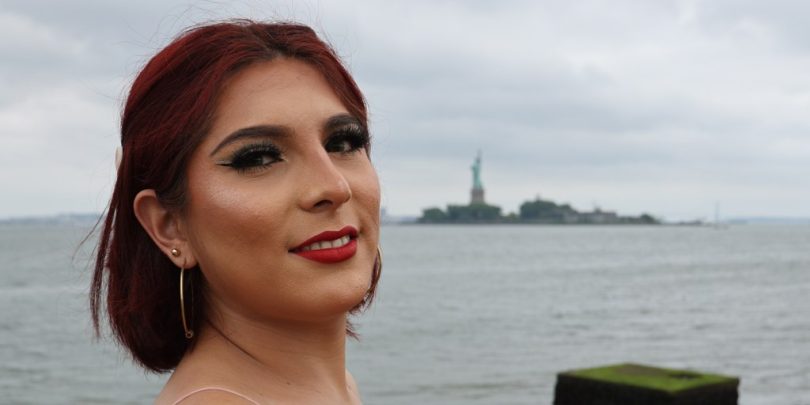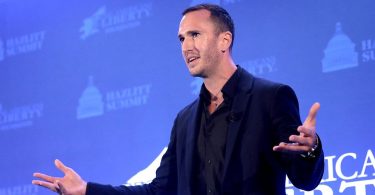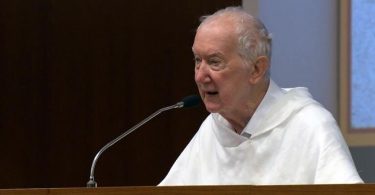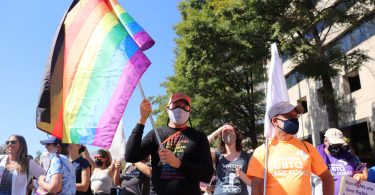JERSEY CITY, New Jersey — Michelle Carranza, 22, did not want to be another trans woman murdered in her native Honduras.
“They don’t accept us there. They kill us, they discriminate us, they rape us,” Carranza said, speaking to NBC News and MSNBC against the backdrop of the Statue of Liberty.
A year and a half ago, she fled Honduras with Gretta Mazariegos, 29, and Gretta’s younger brother, Isaac, 20, two friends who are also part of the LGBTQ+ community.
Michelle Carranza.Andres Gonzalez / NBC News
“To live in Honduras and be part of the LGBT community is all about survival,” Gretta Mazariegos said. “We were persecuted multiple times because we are part of the LGBTQ community.”
“We had to leave our country because of discrimination, beatings,” Isaac Mazariegos said.
Carranza said they were first harassed by members of street gangs known as Maras, after they refused to work for them. One time, the Maras broke into her apartment, destroyed her furniture and left her threatening messages with homophobic language, she said.
They say they were almost killed in a park in Honduras when they were chased by men with machetes who were yelling homophobic slurs.
“That’s when I told Gretta, ‘The best thing is for me to leave Honduras because I feel that here I will eventually be killed,’” Carranza said.
Facing deadly risks — and undertaking a dangerous journey
Gretta Mazariegos left Honduras to save themselves and their brother. When Isaac was 14 years old, their parents kicked them out of their house because they are LGBTQ+.
“I had to become a very resilient person for my brother,” Gretta Mazariegos said. “I could bear the yelling, the beatings, the tortures, but when I saw that my brother was also experiencing that, my role went from being his brother to being his father or mother.”
On Feb. 7, 2023, they left for Guatemala, eventually making their way to Chiapas, Mexico, and later to Tijuana, near the U.S. border.
“When leaving my country, I never imagined the number of dangers that I was going to face,” Carranza said as she dried her tears.
In Tijuana, a meeting with a man who had befriended Carranza turned violent.
“He said, ‘You’re going to die today. You’re not going to see the sunlight again. You will be dead in this hotel today,’” Carranza said. “And he then grabbed me by the hair and threw me on the bed … He almost killed me. That man raped me,” Carranza said.
Some time later, health officials arrived to administer HIV tests where Carranza was staying at the Garden of Butterflies shelter.
“I got tested regularly, but the man who raped me, he raped me without protection,” Carranza said. “I go outside with the nurse, and he said, ‘Your test came back positive.’” Later a doctor confirmed Carranza had contracted HIV.
These three friends survived, but many in the LGBTQ+ community do not.
The Organization of American States reports that the average life expectancy of trans women in Latin America is no more than 35 years of age.
In Mexico, activists have recorded at least 231 murders of LGBTQ+ people in the last three years.
Around the world, at least 67 countries have national laws criminalizing same-sex relations between consenting adults, and, in 12 countries, consensual and private same-sex sexual acts may even carry the death penalty, according to Human Rights Watch.
In Tijuana, the three migrants waited for seven months for an appointment through the U.S. Customs and Border Protection’s CBP One app, which is used to schedule migrants and asylum-seekers to present themselves at a U.S. port of entry.
Their appointment was on June 8, 2024, just four days after President Joe Biden announced new border restrictions.
They entered the border legally in Calexico, California, where border officials documented their entry and released them with a preliminary court date for October 2024.
Hoping to request asylum, despite the hurdles
Carranza and her friends want to request asylum but cannot afford a lawyer, so they are now looking for free legal services. For now, they are trying to collect all the evidence they have of the abuse they faced.
Under U.S. law, persecution due to sexual orientation, gender identity or HIV status are grounds for asylum, explained Bridget Crawford, director of law and policy at Immigration Equality, which represents LGBTQ+ migrants and asylum-seekers. The organization is considering whether to take their case.
“An asylum-seeker must prove that they have a well-founded fear of persecution on account of a ‘protected ground.’ The protected grounds are your race, religion, nationality, political opinion, or membership in a particular social group. LGBTQ status is widely recognized as meeting the definition of ‘particular social group,’” Crawford said.
“Typical evidence that might help an LGBTQ refugee prove their claim are things like police and medical reports detailing attacks or injuries, letters or declarations from partners or others who can credibly attest to the applicant’s LGBTQ status and the facts of their claim, membership in LGBTQ organizations, pictures and dating profiles, a psychologist’s evaluation, articles and reports about conditions for LGBTQ people in a person’s home country,” Crawford said.
Crawford said it is common for LGBTQ asylum-seekers to face barriers when collecting evidence and documentation, such as police reports and medical records.
“This might be because they couldn’t go to the police. It might be because police officers perpetrated the abuse. It might be that they had to flee so quickly, they couldn’t gather that type of evidence,” Crawford said.
Carranza said that after they were chased by men with machetes in Honduras, they went to the police.
“The police told us that if we didn’t have evidence, like video, photos or someone who could testify as a witness, then our word wasn’t worthy,” Carranza said. “In Honduras, the police and the narcotrafficking are all in collusion.”
The only official document they have is a complaint that a lawyer helped them file with the municipality of Villanueva in Honduras. They say they may have other conversations, images and videos saved on their phones that could help them prove their case.
Crawford, who is not working directly with them, said that Carranza and her friends would probably have to explain in their case that they were unable to get police reports because they were dismissed by the officers. “They would have to get affidavits from witnesses, ideally who would also be available to testify, corroborating what happened,” Crawford said.
“In theory, detailed, consistent and credible testimony alone is sufficient to prove a claim provided an applicant can explain to the judge why corroborating documentary evidence was unavailable, but this is often very hard to do, especially if an applicant is not represented by an attorney and trying to navigate the complicated immigration process in a language they don’t understand,” Crawford said.
Michelle, Gretta and Isaac now live in Trenton, New Jersey, with friends. They have new hope now that they are safe in the U.S. as they await their first court date.
Crawford said generally the first court appearance is a short hearing before a judge, in which the asylum-seeker tells the judge if they intend to apply for any relief, such as asylum. “This is not where an asylum-seeker will present evidence on their asylum case. That happens later at what is called an ‘individual hearing,’” Crawford said.
Gretta Mazariegos said there are “so many things I want to do,” so many plans. “I want to continue my studies — I want to collaborate with this country by working.”
Isaac Mazariegos said, “I feel protected to be here, because in my country I couldn’t be myself because of so much discrimination.”
As for Carranza, “we now feel liberated,” she said. “We are happy and emotional about being in this country.”
For more from NBC Latino, sign up for our weekly newsletter.







